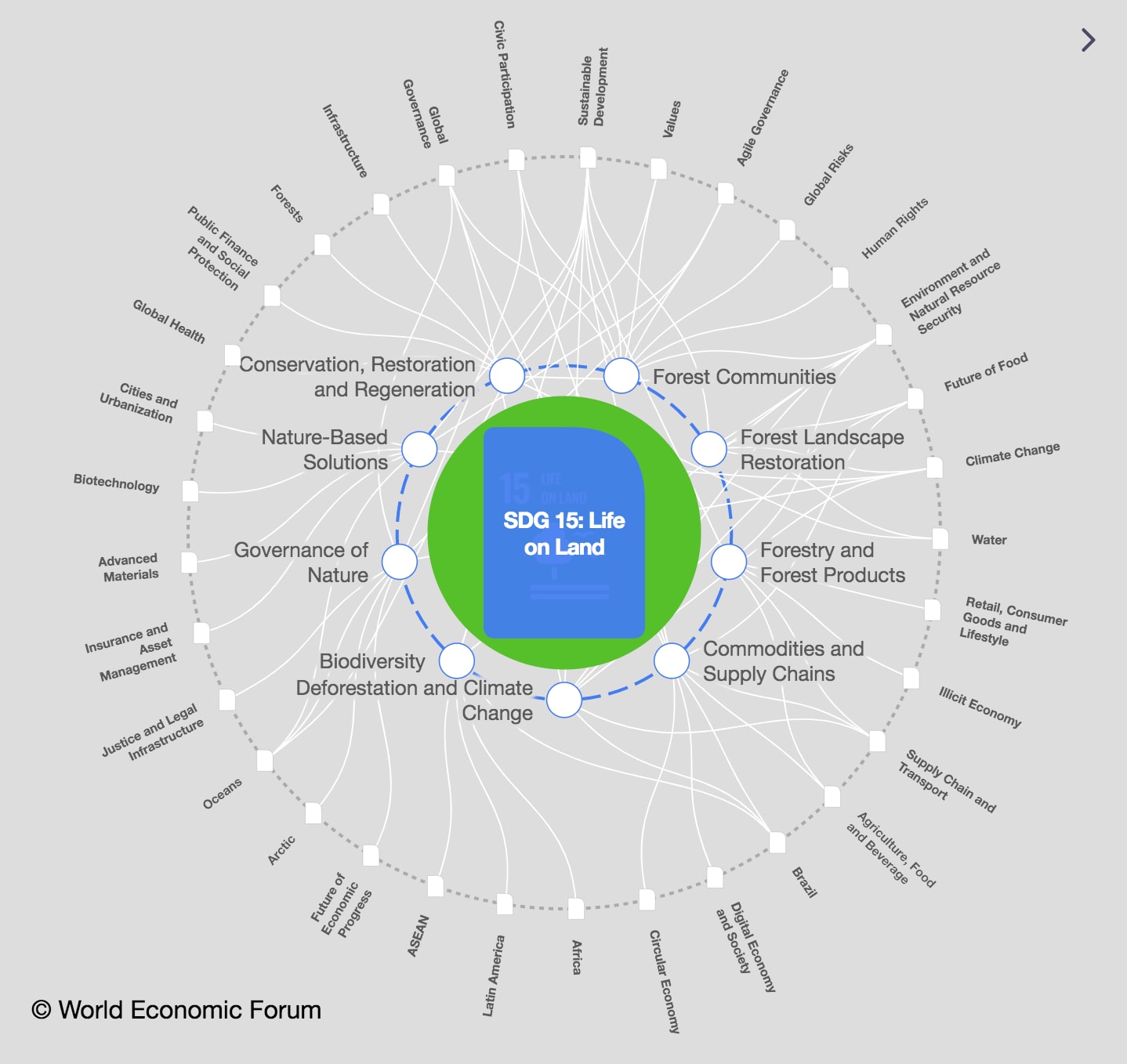Land or water: Which is home to more animals and plant life?

The majority of Earth's species can be found in terrestrial environments. Image: Unsplash/Michael Rodock
- The world is home to an estimated 8.8 million species, but only around 1.7 million have been identified and described.
- Most living biomass is found on land, with plants accounting for more than four-fifths of the total, while animal biomass is most prevalent in marine environments.
- But only 17% of land and 8% of the world's oceans are protected.
- Protected habitats need to increase significantly to mitigate the effects of climate change and guarantee healthy ecosystems, says the UN.
86 percent of all living biomass, around 470 billion tonnes of carbon, can be found in terrestrial environments. According to scientific findings aggregated by Our World in Data, this large percentage is almost all owed to plants, which make up 82.4 percent of biomass on the planet, being found on land. While trees, flowers, mosses and similar organisms dominate the land, the sea is ruled by a different species, as our chart shows.
Animal biomass, although only amounting to roughly two billion tonnes of carbon and therefore only representing a small share of the overall living biomass, is most prevalent in marine environments. 78 percent of all fauna in terms of biomass can be found in water, largely due to fish alone making up one third of all animal biomass. Protists like algae and amoebas are almost cleanly split between terrestrial and marine environments, while bacteria and single-celled prokaryotes are dominant in deep subsurface areas. This special habitat can be found either below the terrestrial surface or the ocean floor and starts at a depth of 50 meters or deeper. Overall, the world is home to an estimated number of 8.8 million species with around 1.7 million of them already being identified and described.
To further highlight the importance of marine environments to animals and humans particular, the United Nations established June 8 as World Oceans Day in 2009. This year, the focus will be put on actions geared towards achieving the protection of at least 30 percent of the planet's lands, waters and oceans by 2030. As of now, only 17 percent of land and 8 percent of the world's oceans are protected, a number that, according to UN experts, needs to significantly improve in order to mitigate some of the dangers of climate change and guarantee healthy ecosystems across the globe.
What is the World Economic Forum doing about nature?
Don't miss any update on this topic
Create a free account and access your personalized content collection with our latest publications and analyses.
License and Republishing
World Economic Forum articles may be republished in accordance with the Creative Commons Attribution-NonCommercial-NoDerivatives 4.0 International Public License, and in accordance with our Terms of Use.
The views expressed in this article are those of the author alone and not the World Economic Forum.
Stay up to date:
SDG 15: Life on Land
Forum Stories newsletter
Bringing you weekly curated insights and analysis on the global issues that matter.








